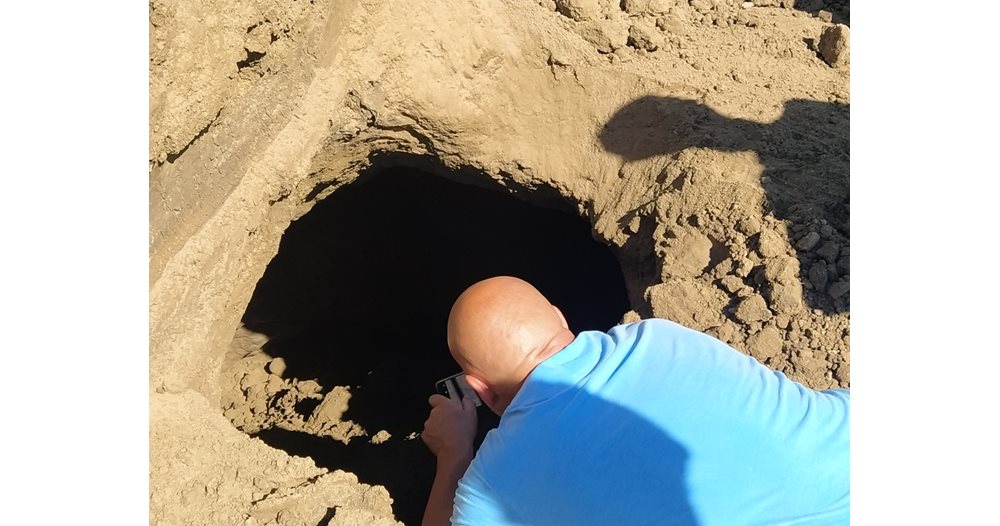They are looking for a grave of a Thracian aristocrat from the 1st – 3rd centuries
The team of archaeologist Lubomir Merdzhanov is looking for a grave of a Thracian aristocrat from Filipopol in the Great Mound of Plovdiv. It is part of the southern necropolis of the ancient city and is located next to the “Yug” OC.
But as they removed the embankment, approaching the central burial, they came upon a second huge mine tunnel that pierced the mound in the center. Its diameter is over 2 meters.
“I really hope they haven’t reached the grave,” said Merdzhanov. And his colleagues were once again amazed by the “mastery” of the Bulgarian treasure hunters. There, however, they found the initials A. M. written on the walls, and the year – 1933 was also indicated. “Apparently they were active then,” reasoned the researchers. According to them, since two tunnels have been shown so far, it is possible that there will be a third.
“Their working hypothesis is a burial from the 1st – 3rd century, when Thrace was under Roman rule. It is a difficult task to guess at this stage who was buried. It is certainly a Thracian aristocrat,” commented Merdzhanov.
He and his team resumed work on the mound two weeks ago. Their plan is to finish by the end of August.
The object is impressive – it is 15 m high, and its diameter is 80 m.
“This is a separate mound necropolis, well south of the city. It was registered from the beginning of the last century by the archaeologist Boris Dyakovic, and subsequently by Dimitar Tsonchev. Both believe that it is connected to a satellite settlement of the city or to some villa estate. It belonged to the local Thracian aristocracy. It is possible that it is connected not so much to people who live in the city permanently, but to aristocrats who kept their positions after the inclusion of Thrace in the Roman state,” reasoned Merdzhanov.
This is the last surviving mound from this necropolis. There were about 100 around. Most were destroyed without control already in the first half of the last century in connection with urbanization, the new road and factories.
“Last year we explored the top, where we registered a medieval church from the XI – XIII century with a small necropolis around it and quite interesting finds. Among them are two seals – one of Peter the Monk Kovuklisiy. According to the epigraph, Nikolay Sharankov Kovuklisiy is a title given to close to the patriarch, and subsequently became honorary, as in this case. The other seal is of Basil Harsianides, a name hitherto unknown in mediavistics. The Harsianides family is associated with the high clergy. The two seals most likely represent correspondence of the local priests with the higher-ups,” recalled Merdzhanov.
For now, he and his colleagues are praying that the treasure hunters have not overtaken them and looted everything.
–


